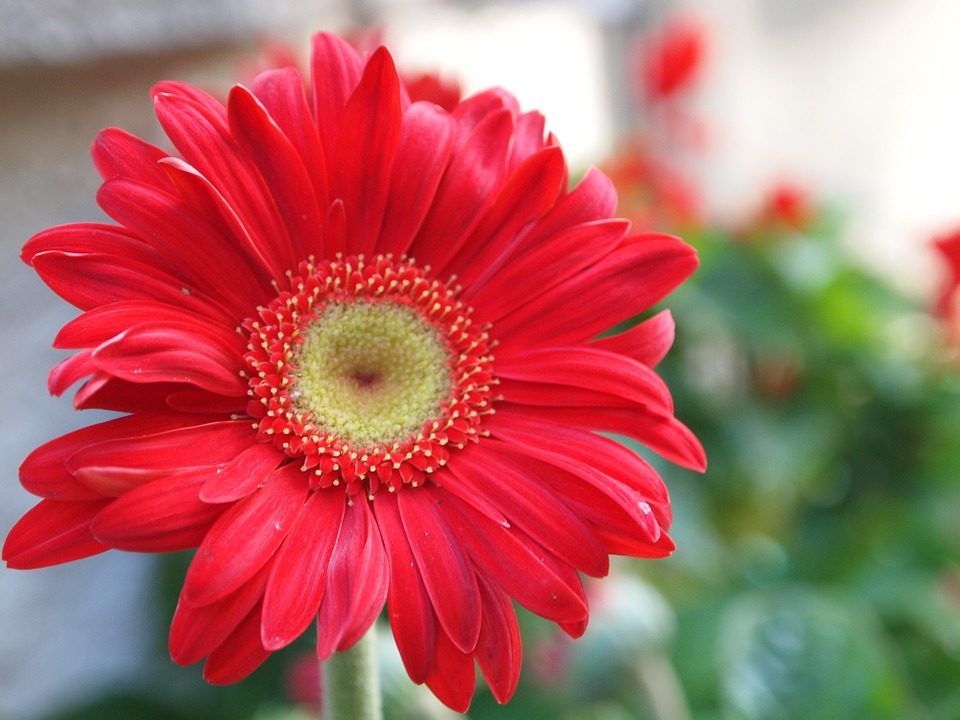Often, when we think about improving our indoor air quality, we link it with expensive filters, UV lights, humidity levels, and fresh air, but Mother Nature is a great resource for naturally removing toxins from your home. As Spring approaches, here are some plants to consider adding to your home to improve the air quality.
Gerber Daisies
While often associated with their bright colours, this South African plant can remove formaldehyde and benzene from your home.
It can be touchy to care for, as Gerber Daisies are susceptible to fungal disease and do require a sunny space to grow.
Chrysanthemums
This perennial plant is easy to grow, and prefer to be in full sunshine. It is known to remove the benzene from your home.
Wax Begonias
Another colourful plant that depending on the variety may prefer full sun or full shade. These plants can withstand short periods of drought, but prefer to live in moist soil environments. Properly cared for Begonias can last for 4-5 years and enjoy humid areas. This plant will remove the benzene and chemicals produced by toluene from the air.
English Ivy
English Ivy plants are an invasive plant that will make the most out of the space you give it. Once established, this plant will tolerate dry conditions, but the vines grow best when the have plenty of moisture. Surviving with little sunlight, this plant removes formaldehyde and airborne fecal matter.

English Ivy is an invasive plant that thrives in small spaces and absorbs formaldehyde and airbornne fecal mater.
Boston Fern
This fern removes formaldehyde, mercury and arsenic from your environment. It may be picky on where you keep it though, preferring high humidity and a cool location to thrive. You can substitute a Kimberley Queen in as an alternate, which is a sturdier option.
Snake Plant
Ideal for a room with low light and bouts of humidity (AKA the bathroom), this plant removes formaldehyde and benzene from the air. It also works in reverse of other plants by turning Carbon Dioxide into Oxygen throughout the night, meaning it is a great option for bedrooms too!
Palm Trees
Whether it is the bamboo palm, lady palm, dwarf date palm, parlor palm or aceca palm, these trees are great for removing pollutants, especially formaldehyde. They are also easy to care for and like to be in cooler temperatures – the 60 to 75F temperature range.
Azalea
This colourful plant makes a great addition to your home, as it comes in a colour that should complement your decor. While looking great in a cool location with sunlight, it will remove the formaldehyde from the air.
Weeping Fig
One of the most popular indoor trees from the Moraceae family, it can have a braided trunk and doesn’t like treated water or change. While it can be tricky and doesn’t like movement or drafts, it does remove formaldehyde, benzene and trichloroethylene.
Chinese Evergreens
This adaptive plant tolerates low light and dry air, but doesn’t like the cold. It will remove various pollutants from the air and will adapt to remove more as it has prolonged exposure to it.
Heartleaf Philodendron
This is an easy plant to grow and is often referred to as the Sweetheart Plant. It isn’t recommended in homes with small children or pets, as it itself is toxic to ingest, but it removes a lot of VOCs and formaldehyde from the air.
Peace Lily
Listed on Nasa’s top 10 Household Air Cleaning Plants list, the Peace Lily removes VOC benzene, acetone, formaldehyde, tolune, xylene and trichloroethylene. It thrives in low light, but requires weekly watering and is poisonus to pets.

Removes VOC benzene, acetone, tolune adn xylene.
Tops Nasa’s list for formaldehyde, benzene and trichloroethylene removal.
Golden Pothos
This attractive and durable vine plant is easy to grow and very forgiving to neglect or overwatering. It is known for removing formaldehyde, carbon monoxide and benzene from the air. A Philodendrons is an acceptable alternative to the Golden Pothos.
Red Edge Dracaena
This distinctive plant requires moderate sunlight and the occasional watering, so it can remove the gases released by xylene, trichloroethylene and formaldehyde.
Aloe Vera
Often associated with healing sun burns, Aloe Vera plants also improve the air quality in your home. Ideally placed in a kitchen, for easy access when needed for first aid, this plant helps remove formaldehyde and benzene.
Spider Plant
Spider plants are great in hanging baskets or sitting on a stand, as they remove airborne formaldehyde and benzene. They also combat carbon monoxide and xylene. Your pets are safe around them, as the plant is not toxic.
Don’t forget to ensure you have a Carbon Monoxide detector in your home – even if you have plants that fight CO. These plants help, but other IAQ options are recommended based on your home and family’s need.
Sources:
http://www.thisoldhouse.com/toh/photos/0,,20452423,00.html
http://www.mnn.com/health/healthy-spaces/photos/15-houseplants-for-improving-indoor-air-quality/a-breath-of-fresh-air
http://www.rodalesorganiclife.com/garden/7-plants-purify-indoor-air
gardeningknowhow.com
http://www.guide-to-houseplants.com/
http://www.thegardenhelper.com/
pixabay.com



